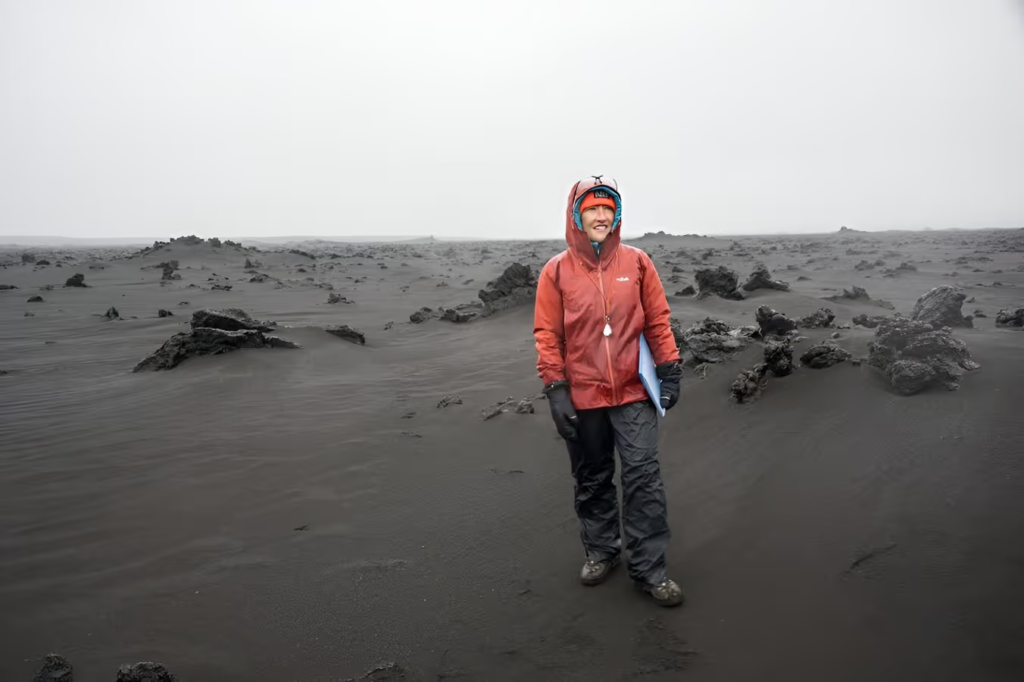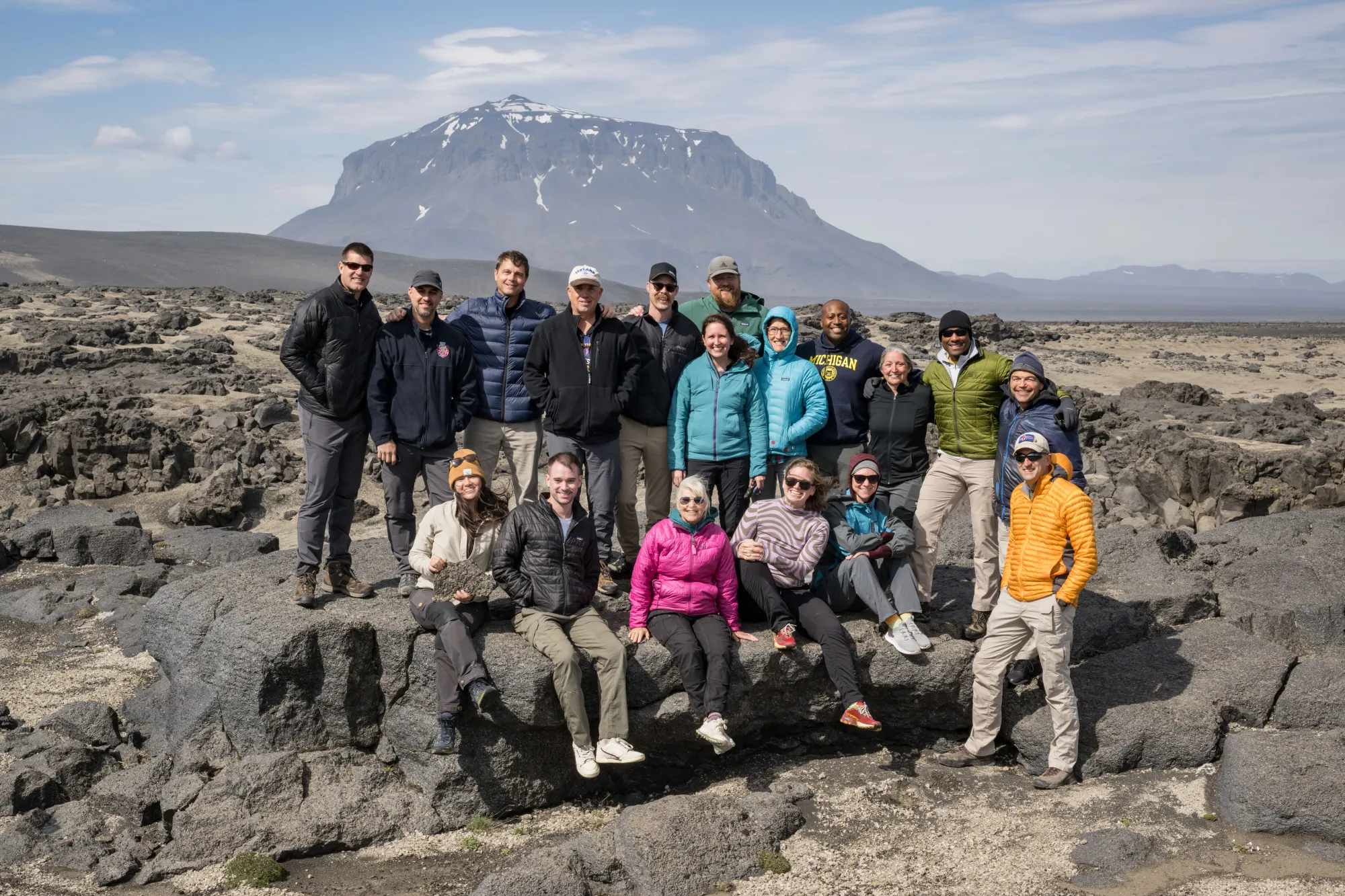NASA chooses Iceland’s barren landscape as the ideal location for training the crew of its Artemis II mission, a major step toward returning humans to the Moon. The decision to train in Iceland is rooted in the region’s lunar-like geological features, which closely resemble the environment the astronauts will face during their mission.
As NASA aims to land the first woman and first person of color on the lunar surface in future Artemis missions, preparing astronauts for such a monumental task is critical.
The Lunar-Like Landscape of Iceland
The Artemis II crew, consisting of NASA astronauts Reid Wiseman, Victor Glover, Christina Koch, and Canadian Space Agency (CSA) astronaut Jeremy Hansen, along with their backups, embarked on an expedition to Iceland during the summer. They were joined by geology experts from NASA’s Johnson Space Center in Houston for specialized field training, a practice that dates back to the Apollo missions.
The dark, gray sediment that stretches across Iceland’s desolate plains and the volcanic formations covering the terrain bear striking similarities to the Moon’s surface. In addition to its appearance, the island’s geological processes—such as volcanism—mimic the planetary phenomena the crew will study in orbit around the Moon.
The training in Iceland allowed the astronauts to immerse themselves in an environment that closely mirrors what they will encounter during their mission, with the goal of honing their geology skills for future lunar exploration.
Read : New Record for Mankind as 19 People Orbiting Earth Right Now: NASA
Cindy Evans, Artemis geology training lead, emphasized Iceland’s importance in astronaut preparation: “Apollo astronauts said Iceland was one of the most lunar-like training locations that they went to in their training.
It has lunar-like planetary processes—in this case, volcanism. It has the landscape; it looks like the Moon. And it has the scale of features astronauts will both be observing and exploring on the Moon.”
Why NASA Chose Iceland for Artemis II Training ?

NASA’s decision to train in Iceland stems from its geological similarities to the Moon. The volcanic terrain, basalt formations, and barren landscapes closely resemble the lunar environment.
Iceland offers a natural laboratory for astronauts to practice field geology, study volcanic rock similar to those on the Moon, and prepare for the challenges of lunar exploration.
Its unique geological processes, such as volcanism and glaciation, provide the perfect setting for astronauts to simulate the conditions they will encounter on the lunar surface during the Artemis missions.
The Science of Iceland’s Geology
Iceland’s unique geology, which includes both basalt and breccia rock formations, plays a crucial role in this training. Basalts are iron-rich, fine-grained rocks formed from volcanic activity.
In Iceland, basalt lavas flow from volcanoes and deep fissures, forming vast fields of dark, barren rock. The Moon also has an abundance of basalts, which have formed from both volcanic eruptions and lava pools in impact craters.
Breccias, on the other hand, are rocks made up of angular fragments that are fused together through intense geological processes. In Iceland, these rocks are created by explosive volcanic eruptions, while on the Moon, breccias form as a result of meteoroid impacts. By studying these rocks in Iceland, the Artemis II crew is preparing to apply the same techniques to the Moon’s surface.
Trevor Graff, an exploration geologist at NASA Johnson, highlighted the significance of these geological formations in astronaut training: “The tools we used during the Apollo missions haven’t changed that much for what we’re planning for the Artemis missions.
Traditionally, a geologist goes out with just standard tool sets of things like rock hammers and scoops or shovels to sample the world around them, both on the surface and subsurface.”
Geological Tools for the Moon
While the basic tools used in field geology—rock hammers, scoops, and chisels—haven’t changed significantly since the Apollo missions, NASA’s engineers are taking new challenges into account for Artemis.
The lunar environment imposes limitations on the tools astronauts can use, primarily because of the pressure suits and gloves they wear, which make precision handling difficult. Additionally, tools must be designed to preserve the pristine nature of lunar samples for study back on Earth.
Engineers have modified traditional geology tools to ensure that they meet the specific requirements of lunar exploration. For example, rock hammers must be lightweight yet sturdy enough to collect samples from a range of materials. Similarly, scoops and shovels must allow astronauts to easily gather lunar soil and rock fragments while maintaining the integrity of the samples.
Read : Sunita Williams and Butch Wilmore to Vote in US Election from Space : Process is Here
“Engineers must take into consideration limited mass availability during launch, how easy it is to use a tool while wearing pressurized gloves, and how to ensure the pristine nature of the lunar samples is preserved for study back on Earth,” said Graff.
These tools, while basic, are essential for gathering data that can help scientists better understand the Moon’s geological history and its evolution over billions of years.
Training Beyond Geology

In addition to practicing geology, the Artemis II crew is also working on teamwork, navigation, and expeditionary skills. Iceland’s remote and challenging environment offers the perfect conditions for these exercises, helping the crew to bond and develop the skills they’ll need to live and work together in space.
NASA recognizes the importance of this type of training, not only to prepare astronauts for the physical demands of space exploration, but also to help them develop the mental and emotional resilience required for long-duration missions. The Artemis II crew’s ability to communicate effectively, solve problems together, and support one another will be critical to the success of the mission.
Angela Garcia, an exploration geologist and Artemis II science officer, expressed her excitement about the potential for scientific discovery on the Moon: “There’s really transformational science that we can learn by getting boots back on the Moon, getting samples back, and being able to do field geology with trained astronauts on the surface.”
The Significance of Artemis II
The Artemis II mission will be NASA’s first crewed mission under the Artemis program and marks a critical step toward returning humans to the Moon. The crew will travel approximately 4,600 miles beyond the far side of the Moon, reaching farther into space than any previous human mission.
While the Artemis II astronauts will not land on the Moon, their mission will pave the way for future missions that will explore the lunar surface in greater depth.
During their mission, the crew will observe a variety of lunar surface features, including craters, ridges, and valleys. These observations will be key to understanding the Moon’s geologic history and will help scientists prepare for future exploration missions that aim to establish a sustainable human presence on the Moon.
One of the primary objectives of the Artemis II mission is to study the lunar surface from orbit. The astronauts will take high-resolution photographs of surface features and provide detailed descriptions of their appearance, including color, reflectivity, and texture. These observations will provide valuable data that scientists can use to map the Moon’s geologic history and identify areas of interest for future exploration.
“Having humans hold the camera during a lunar pass and describe what they’re seeing in language that scientists can understand is a boon for science,” said Kelsey Young, lunar science lead for Artemis II and science officer at NASA’s Goddard Space Flight Center.
A New Era of Lunar Exploration
The Artemis program represents a new era of lunar exploration, with the goal of establishing a sustainable human presence on the Moon. By sending astronauts to explore and study the lunar surface, NASA hopes to gain new insights into the history of the solar system and unlock the secrets of the Moon’s formation.
In addition to its scientific objectives, the Artemis program is also focused on fostering international collaboration in space exploration.
The inclusion of Canadian astronaut Jeremy Hansen in the Artemis II mission underscores NASA’s commitment to working with international partners to achieve its goals. Future Artemis missions will include astronauts from other countries, further expanding the global partnership in lunar exploration.
As NASA prepares for the next phase of the Artemis program, the lessons learned from the Artemis II mission will be critical to the success of future lunar exploration. With the first woman and the first person of color set to land on the Moon in upcoming missions, the Artemis program is poised to inspire a new generation of scientists, engineers, and explorers.
NASA’s decision to train the Artemis II crew in Iceland highlights the importance of preparing astronauts for the unique challenges they’ll face during lunar exploration. Iceland’s lunar-like landscape provides the ideal environment for training in geology, navigation, and teamwork, ensuring that the crew is ready for the demands of their mission.
As the Artemis II crew prepares to embark on their historic journey, their training in Iceland will play a crucial role in helping them achieve NASA’s ambitious goals for the future of space exploration.
let’s enjoy few years on earth with peace and happiness….✍🏼🙏

